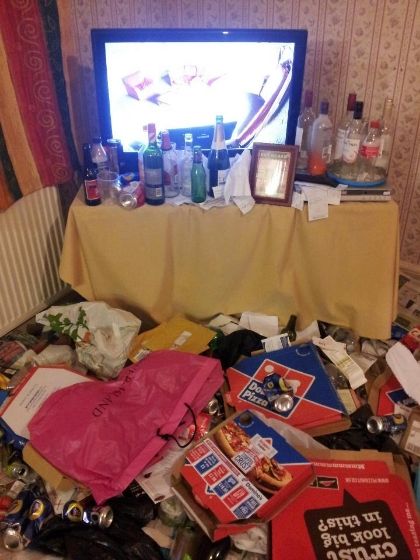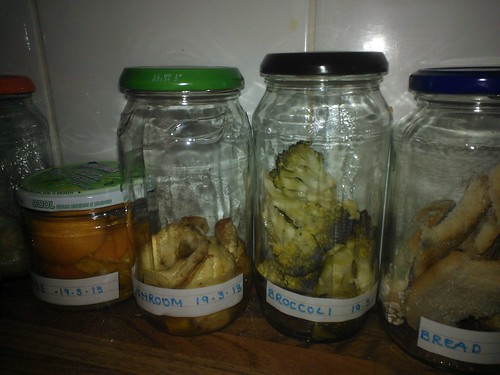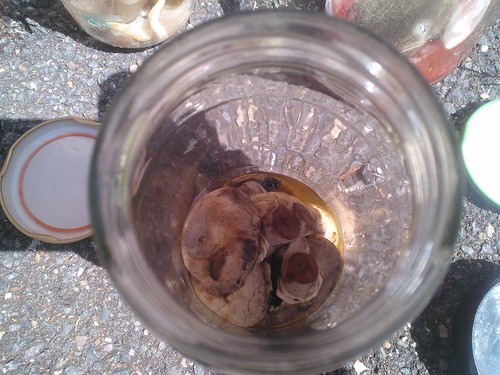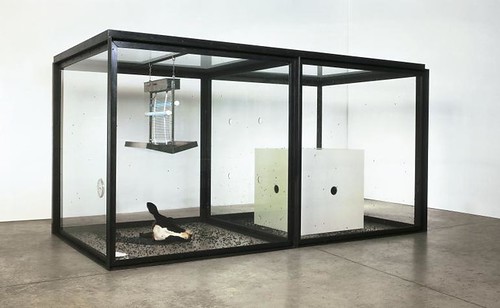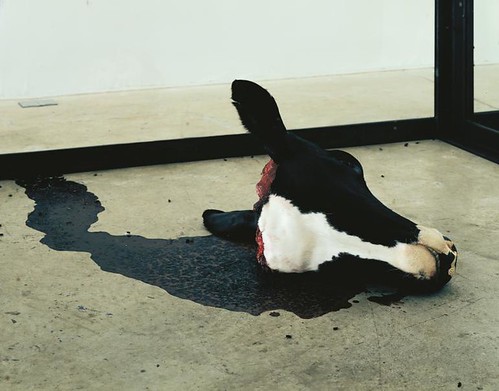Safehouse as a project has to be considered a success. Each room provided an extremely different experience for each individual audience member, showcasing to them events and actions which many, myself included, would never have expected to find inside a house. Even as a member of Safehouse I found many of the final performances challenging to my perceptions of a house and home.
The process which we have gone through to create this performance was detailed – with a lot of work going into building the experience for the audience in every single room. As my previous blog’s have shown we worked through a number of ideas in the bedroom. Some were discarded through the process and others have been developed fully and further than even we ever thought possible, to build a piece which I would like to think stood tall on its own merits.
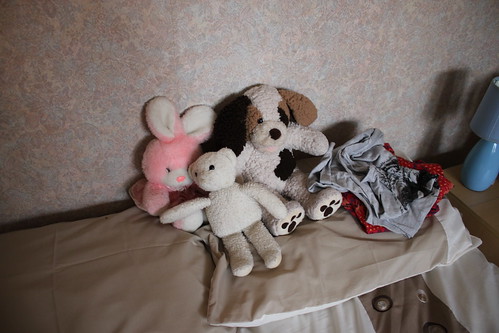 Photo taken 05/02/2013 by Jozey Wade
Photo taken 05/02/2013 by Jozey Wade
I would break the audience we performed to in the bed down into three categories, the first is those audience members who felt very comfortable with the situation they had found themselves and embraced it wholeheartedly. We had one particular audience member who was very comfortable in the bed, snuggling up to the assorted teddy bears which were laid out. With a constant smile on their face throughout the reading of Alice in Wonderland and the personal you narrative. This comfort is something which we aimed for with all audience members who were in the bed. This would mean that there was the biggest contrast between those in the bed and the Voyeur.
The second audience category is the one which the majority of the audience fall into. Those who, at first, were rather cautious and to an extent scared/nervous of what they were about to experience but who over the course of the piece relaxed until towards the end they were comfortable enough to interact with me in the bed.
The third audience category I notice was the audience members who simply did not want to be there. These audience members gave a feeling of being exceptionally awkward and uncomfortable throughout the performance. We had two audience members who, for me, defined this category, both of whom simply did not want to get in the bed. They had a large amount of eye contact with the Voyeur and laughed along with them, in a very awkward manner, unnaturally often. When they were convinced that they would be safe in the environment and did get into the bed they laid as far away from me as was possible. Laying deadly still and not moving or reacting to anything whatsoever, leaving with the utmost urgency when the piece came to its conclusion.
If we were to perform this piece again, I think it would be useful to increase the performance time. This would allow us time to make our audience member feel more comfortable in their surroundings before asking them to get into the bed. We could give them a tour of the room, pointing out certain pictures which have particular meaning and explaining this meaning to the audience. Allowing them to interact with us in a casual friendly way, building their confidence in their surroundings and with us before the performance in the bed begins.
I also think that it would be useful to have more of a summery at the end of the performance. By this I mean an individual discussion with our audience members on their experiences, through this I think that we would be able to improve the experience for our audience and hopefully cut out the awkwardness which was felt by the minority.

